Create a simple Easter science and physics experiment with plastic Easter eggs and use all those plastic eggs you have been collecting! Egg races are perfect for playful learning and this egg race experiment is a quick set up too! Easter STEM activities are the way to go with young scientists!
PLASTIC EASTER EGG RACES FOR EXPLORING PHYSICS
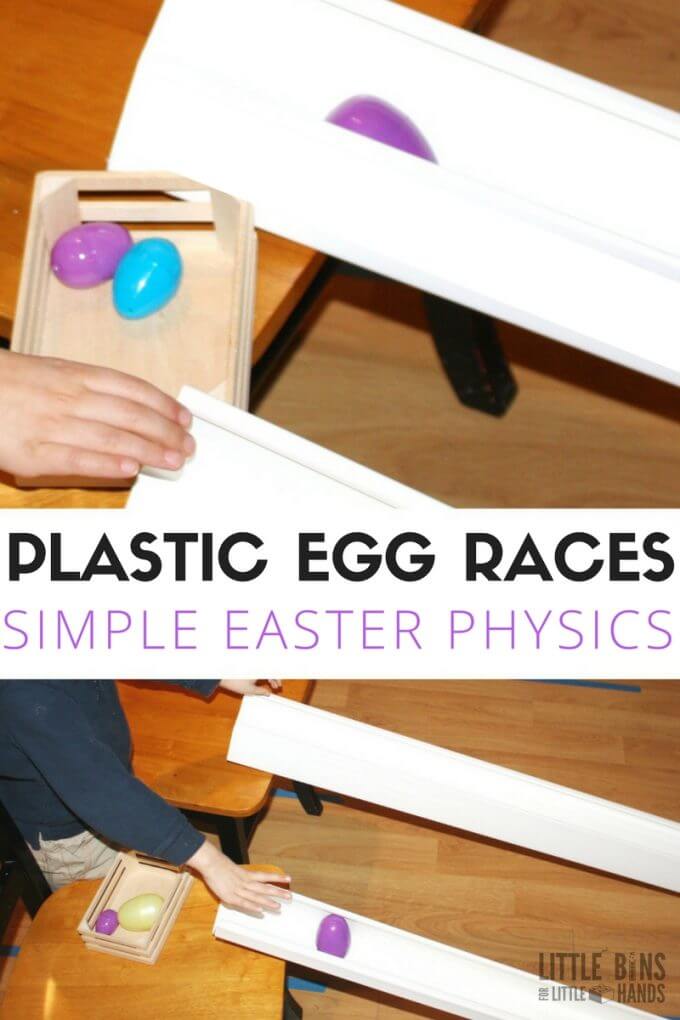
RACING RAMPS
You will find all our best Easter science activities right here!
I thought it would be very fun to continue our science exploration with plastic eggs by hosting Easter egg races, but what to race them on?
We bought a 10′ plastic rain gutter for $5 at Home Depot. (I thought of at least 5 more ways to use it later on!) My husband sawed it in half for me, and I sanded the edges. It made a great egg ramp to use for our egg races.
Our race cars were two different sized plastic eggs, but you can add as many sizes as you like. Older kids will be able to extend the learning with this activity by comparing multiple size eggs.
SUPPLIES:
- Plastic Eggs {variety of sizes is best!}
- Plastic Rain Gutters {or make your own ramps out of cardboard with bent sides to keep eggs from rolling off}
- Stopwatch {fun but optional and perfect for the older kids who need to extend the activity a bit}
Looking for easy to print activities, and inexpensive problem-based challenges?
We have you covered…
Click here to get your FREE Easter STEM challenges!
Let the egg races begin!
Help your kids make predictions as to what will happen with different size eggs and different angles of ramps.
Make sure to get the discussion going with simple questions. Introduce a “What do you think will happen if…?” type of question.
Older kids may also find learning about Newton’s Laws of Motion to be interesting, and they can easily apply them to the eggs on the ramp.
NEWTON’S FIRST LAW
An object at rest will stay at rest, and an object in motion will stay in motion, unless a force acts on it. The egg is not going to move unless a force is applied to it! So you need to pick it up and provide a way for the egg to accelerate. For every action, there is an opposite and equal reaction.
Our set up would be a little better to show this if we had a platform for the egg to sit on at the top of the ramp. However, an object will stay in motion if it is in motion until it encounters an unbalanced force. The unbalanced force here is the shift from the ramp to the floor.
ALSO CHECK OUT: Easy Physics Experiments For Kids
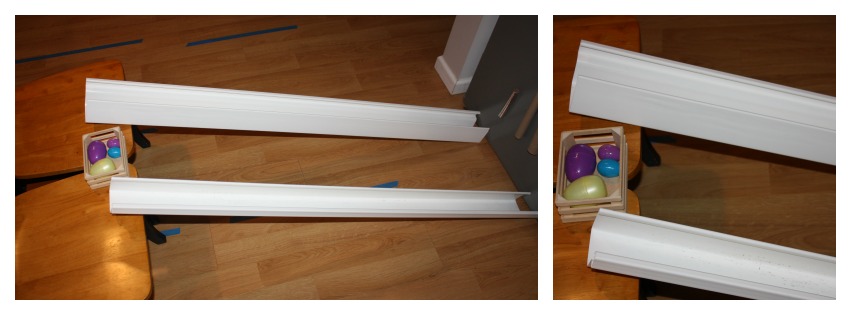
Easter Egg Races: Make It An Experiment
Egg races make an excellent experiment to make predictions! We discussed the angles of the ramp and how they influenced the speed of the egg. Higher ramp/angle the faster the egg went, the lower the ramp angle, the slower the egg went.
We also discussed a favorite concept called gravity and how it helped to pull the eggs down but as the angle of the ramp decreased it slowed gravity down. The large egg was generally faster than the small egg except when the ramp was lower. Each ramp angle presented a new discovery and a chance to guess what might happen!
This simple egg race activity provided so many physics lessons to try out!

The ramps with the same angle we tested out the different size eggs and found the smaller egg was slower!
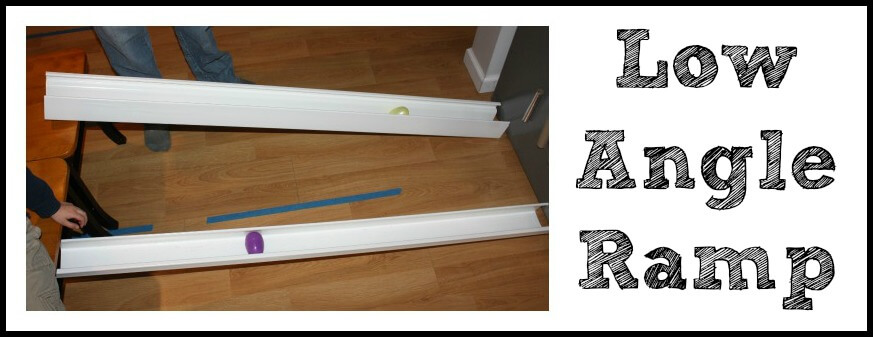
The ramp with the lowest angle also had the slowest moving egg with both big and small eggs. The big egg even had a hard time getting started, but it did get rolling after a few seconds. It couldn’t catch up but finished once it got in motion.
The egg on the high angle ramped zoomed down super fast with the help of gravity!
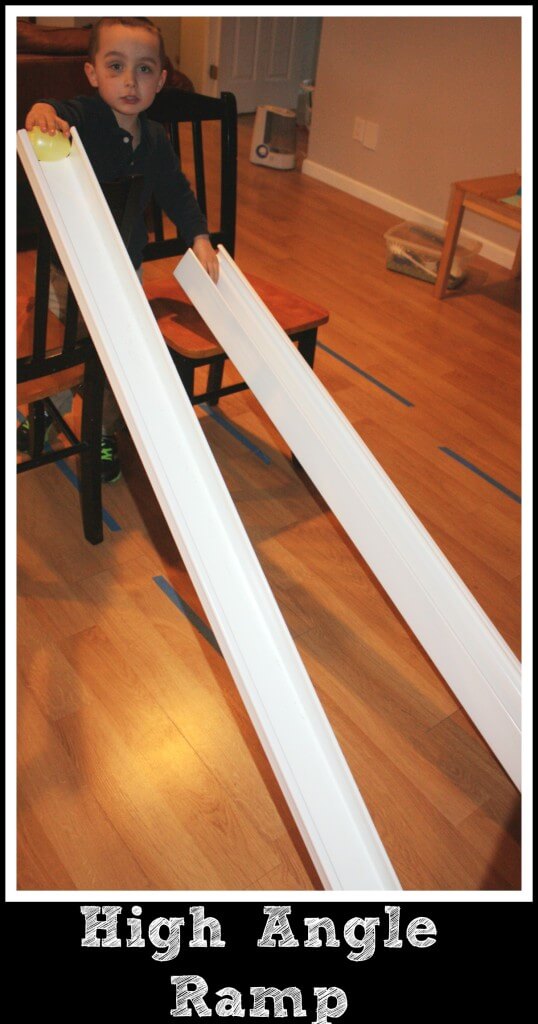
EXTEND THE LEARNING FOR OLDER KIDS
You can extend the learning with our plastic Easter egg races activity by introducing the concept of friction and the role friction plays as an external force. Grab a towel and place it over a ramp to test the differences in speed.
Additionally, you can talk about potential and kinetic energy. The egg at the top of the ramp has stored potential energy as the egg goes into motion it is using its kinetic energy and the stored energy is decreasing. The energy an object has in motion is called kinetic energy. This energy is also determined a lot by the object itself.
Try it out! Experiment with these ideas and have fun! This is a great way to include both older kids and younger kids in the learning experience and have both age groups take away important information. Have a bowl of marbles ready that can be added to the eggs too.
FOR YOUNGER KIDS
After we were finished egg races with the plastic eggs, Liam tried out some cars and balls as well. He found it very interesting to move the ramps up and down and guess what would happen to the different items he tried. Hands-on experimenting can be and should be playful for young kids!
EASTER RACES WITH PLASTIC EASTER EGGS
Click on the image below or on the link for more egg experiments for kids.
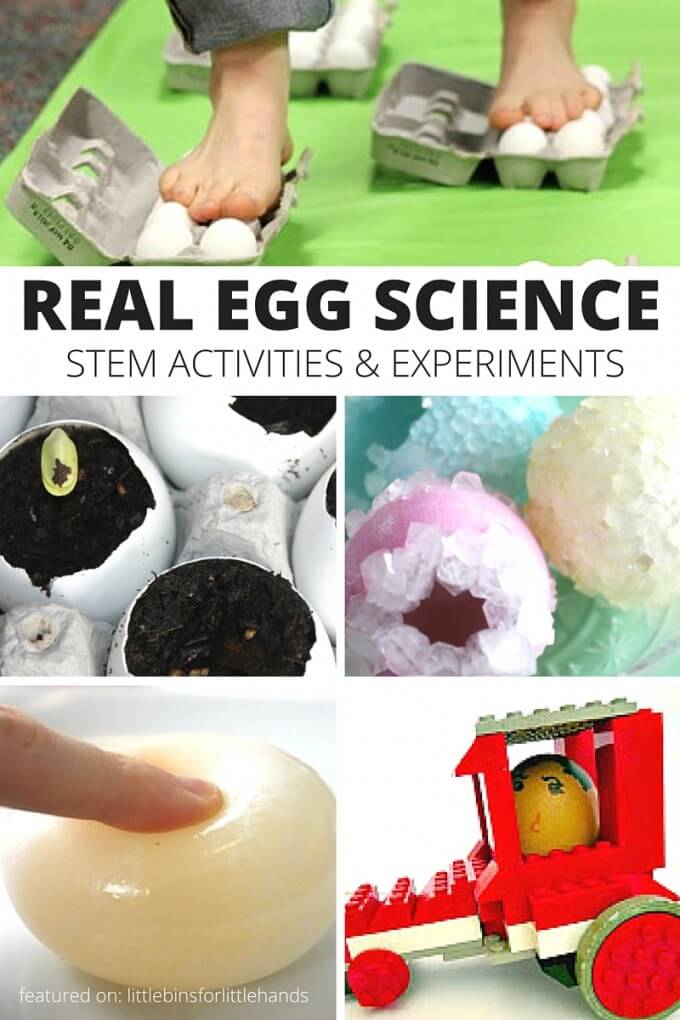









How fun! Another idea would be to test how weight affects the race.
You can also test the effect of mass by adding items inside the eggs to make them heavier! 🙂
That looks like fun! I love that you could use the ramps with other items too. I’m storing up ideas for summer’s rainy days.
What a fun way to play with physics! I bet it was fun to watch the eggs wobble their way down the ramp too!
Thanks! We enjoy trying out all sorts of things in an easy to manage way for my little guy!
Yes you could! Could even bring them outside too! I bet we will get our $5 worth!
What a great exploration!! Thank you for sharing at Sharing Saturday!!
Thanks Carrie! We like simple fun!